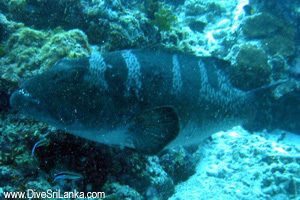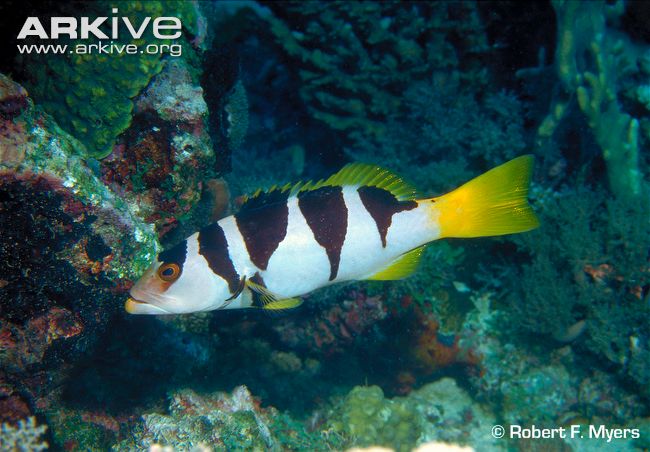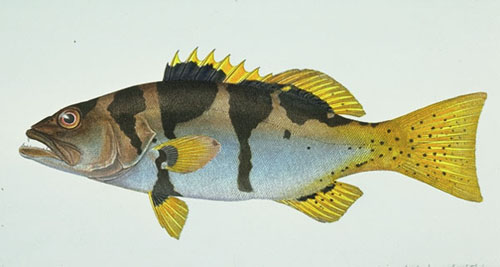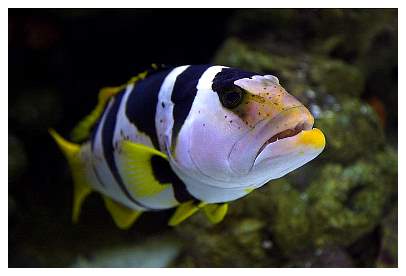
Plectropomus laevis
FAMILY
Serranidae
TAXONOMY
Plectropomus laevis (Lacepede, 1801), type locality not specified.
OTHER COMMON NAMES
English: Blacksaddled coral trout, giant coral trout, tiger coral
trout; French: Mйrou sellй.
PHYSICAL CHARACTERISTICS
Body elongate and robust, with the outer margin of the anal
fin straight, and a large and slightly emarginate caudal fin. The
mouth is relatively large with prominent canines. There are 8
spines and 11 soft rays in the dorsal fin, 3 spines and 8 soft
rays in the anal fin, and 16–18 rays in the pectoral fin. This
species has two color phases. The “tiger” or pale phase consists
of a base color of white with four black bars or saddles, some
incomplete, along the flank, yellow fins and mouth parts, and
small blue spots with dark edges on the caudal penduncle and
caudal fin. The dark phase is reddish brown with many small
blue spots with dark edges scattered over the body and fins,
and less prominent bars along the flanks. Grows to 39 in (100
cm) in total length.
DISTRIBUTION
Indo-West Pacific, from Kenya and Mozambique east to the
Tuamotu Archipelago in Polynesia, north to the Ryukyu Islands
of Japan, and south to Queensland in Australia; absent
from the Red Sea and Persian Gulf.
HABITAT
Juveniles are often found in turbid areas of deeper lagoons and
back reefs, while adults prefer the clear water of seaward reefs,
lagoons, and passes. Will utilize holes and crevices in the reef
for shelter.
FEEDING ECOLOGY AND DIET
An efficient predator that feeds primarily upon smaller fishes
and, to a lesser extent, large crustaceans. Larger individuals
take larger prey, however, and often these are fishes (e.g., parrotfishes,
large wrasses, surgeonfishes) that may be up to nearly
half their body length in size.
BEHAVIOR
Juveniles and young adults may be somewhat gregarious and
often hover above the bottom, but will retreat to shelter when
threatened. Larger adults utilize habitats as shelter but may be
found patrolling territories or home ranges.
REPRODUCTIVE BIOLOGY
Protogynous hermaphrodite that forms spawning aggregations
prior to courtship and spawning. Spawning occurs between
October and November on the northern Great Barrier Reef.
Spawning is pelagic, as are the eggs and larvae.
CONSERVATION STATUS
Not listed by the IUCN but potentially vulnerable to overfishing
at some localities.
SIGNIFICANCE TO HUMANS
A species of particular importance to commercial, recreational,
and subsistence fisheries. Large individuals may be highly
ciguatoxic.
Photo Gallery of - Blacksaddled coral grouper





 Animalia Life
Animalia Life